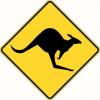I would like to try ceramic stones for sharpening chisels and plane blades. Most of them are PM-V11 or A2 steel. I am considering Spyderco and Sigma Power (from Stu that comes in a set of 3 stones and an Atoma plate). I do not like water stones, so looking for stones that don't need as much water as the typical water stones. This is the main reason I am looking into ceramic stones.
Looking for input from people who have experience with these stones to understand which brand has better performance. Seems like Sigma Power stones from Stu (Tools from Japan) may be wider than the Spyderco stones on Amazon...




 Reply With Quote
Reply With Quote


 It has been over 25 years,and I can't really recall by now.
It has been over 25 years,and I can't really recall by now.
 ). The 13k is magical and I use it in places where I really should drop back a grit but its still way fast enough.
). The 13k is magical and I use it in places where I really should drop back a grit but its still way fast enough.
